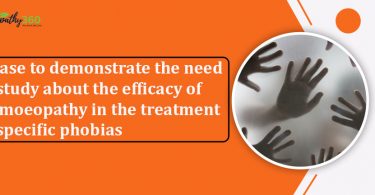
ABSTRACT
Indigenous drugs of India are pregnant with great potentialities of therapeutic virtues. They are capable of curing diseases effectively without any adverse reactions, as we know their immense and excellent curing power for last so many years. Their efficacy in curing both acute and chronic cases have been acknowledged and experienced. Their therapeutic values have been explored since the time of Charaka, Sushruta and others for the treatment of numerous diseases including various female disorders. This article presents the indications of different leading Indian drugs in the treatment of female patients suffering from various disorders.
INTRODUCTION
India is a vast country and a treasure house of multifarious remedial agents[1]. Such medicinal herbs have been used since ancient era and some of them are incorporated in Rigveda. These medicinal plants were being used, since the dawn of the civilization, as folklore medicines and some on the basis of doctrine of signature. It is believed that the natural healing agents, mainly the plants, which are available in plenty in a particular country, are used to combat the diseases normally prevalent in that country. The plants and herbs growing in a particular locality bear a remarkable affinity on the temperament and constitution of the individuals living in that locality[1] . Since time immemorial, the physicians of our country have used a variety of plants as medicines to treat numerous diseases. In ancient India, the vaids and hakims who were at the service of kings and Nawabs and many royal personalities have used plants in their mixtures and formulations to treat various diseases. Since the time of Charaka, Sushruta and others, the Ayurveda system of medicine has explored and used the medicinal properties of numerous plants to the advantage of the patients[2]. It is therefore, apparent that the Indian drugs will be found to be most suitable to our constitution and most efficacious in various affections. The vegetation of India, it is said is so rich in medicinal herbs that its materia medica could hardly be equaled in any other country. The knowledge of medicinal herbs and plants that they acquired was simply wonderful. It is daily marked by us that the plants and herbs growing in a particular locality bear a remarkable affinity on the temperament and constitution of the individuals, habituating that locality. It is therefore, apparent that the Indian drugs will be found to be most suitable to our constitution and most efficacious in all our affections.[1]
The Homoeopathic pharmacopoeia of India is rich with the monographs of Indian drugs. The homoeopathic physicians of our country and foreign countries are now inquisitive to know more about the therapeutic properties of these drugs of India.[1]
Female troubles are a common condition that includes various hormonal changes at puberty, menarche, and pregnancy until menopause. The women with great physical and mental stress suffer from disturbed menses. . Majority of the females don’t visit a doctor due to ignorance, or unawareness of the disease; some can’t afford the expenses. In some families women’s health is not taken seriously. Homoeopathy believes in holistic treatment of female patients, considering the totality of symptoms of each patient, irrespective of the disease she is suffering from.
The homoeopathic materia medica is rich with so many Indian drugs which are useful for different female disorders. In this article, some Indian drugs which are frequently used by the physicians for treatment of various female diseases are discussed.
1. ABROMA AUGUSTA [1,3,4]
- Common name- Devil’s cotton
SYMPTOMATOLOGY
- Useful both in dysmenorrhoea and amenorrhoea .
- In suppression of menses, painful menses, dysmenorrhoea and in all disorders of menstrual flow it is used with considerable benefit; useful in hysteria associated with menstrual disorders[1] .
- Menses irregular, premature, too short or too long lasting, colicky pain in the lower abdomen during a day or two prior to the appearance of the mense; blood is dark, clotted, profuse or scanty. Patients becomes pale with vertigo, nausea, vomiting and at times hysterical spasm[1,3] .
.
- Leucorrhoea, profuse, whitish, thin or watery discharges in thin, sick looking young girls with chlorosis.
2. ALLIUM SATIVUM [2,4]
- Common name -Losohn
SYMPTOMATOLOGY
- Menses too early, acrid, excoriating with headache and dizziness.
- Suppurating pimples at vaginal orifice, on vulva; extensive excoriations of skin of internal portions of thighs and eruptions on breasts during menses.
- Bright red spots, with itching and smarting pain on the inside of the labia majora and at vaginal orifice.
3.ARCTIUM LAPPA[2]
- Common name-Great Burdock or Cheron
SYMPTOMATOLOGY
- Pain during mense, <back, more pain than usual in backand hypogastrium during menses, <10.00am, till 1.00pm.
- Displacement of the uterus, particularly in prolapsus associated with sore , bruised feeling; great relaxation.
- All symptoms< standing or walking.
- Prolapse of uterus with much bearing down sensation. leucorrhoea.
4. CINNAMOMUM ZEYLANICUM [2]
- Common name- Dalchini
.
SYMPTOMATOLOGY
- Menses-regular, every 4 weeks, each period however lasting for eight days longer than usual, followed by leucorrhoea, uterine pains.
- Menses too early and too profuse particularly in females troubled with itching of nose and nocturnal restlessness; profuse flow of bright red blood.
- Irregular menstruation; menorrhagia depending upon chlorosis or anaemia .
- After a false step or a strain in loins, profuse flow of bright red blood.
- Chronic metrorrhagia, leucorrhoea and vomiting of pregnancy.
- Haemorrhage during or after gestation from lifting, straining, overstretching the arms or taking a false step, threatening abortion.
- Labour – weak, ineffectual or false labour pains, spasms, twitching, syncope during labour.
- Complete cessation of labour pains. Mitigates the severity of labour. Severe metrorrhagia in primipara after the 1st few pains.
- When the os is dilated about an inch, placenta is distended with the head ,convulsions start following tearing of the cord; violent haemorrhage after subsidence of the spasm. To lessen severity of after pains.
- Repeated scanty haemorrhage during puerperium.
- Metrorrhagia some days after delivery. Amenorrhoea, anemia and flatulence.
5. FICUS RELIGIOSA [1-4]
- Common name- Ashwatho
.
SYMPTOMATOLOGY-
- Menorrhagia, blood bright red accompanied by bearing down pains in the lower abdomen.
- Excessive offensive vaginal discharge.
- Suppressed sex, insatiate sexual desire.
6. FICUS INDICA[1-4]
- Common Name – vata
SYMPTOMATOLOGY
- Copious haemorrhage during menses and bloody leucorrhoea.
- Haemorrhage due to any cause, when the colour of blood is pure red, haemorrhage before any evacuation.
7. HYDROCOTYLE ASIATICA [1-4]
- Common name –Brahma manduki, Thalkudi
SYMPTOMATOLOGY
- Vulva, vagina and cervix red; deep seated heat at the bottom of vagina, shooting, pricking and insupportable itching at its orifice.
- Dull pain in region of ovary; pain in uterus especially of left side.
- Violent pains in and around uterus, like labour pains. Uterus feels heavy .partly fungus, partly granular ulcer on upper lip of neck of uterus easy bleeding from cervix, with proufuse leucorrhoea.
- Granular ulceration of entire neck of uterus which is very red,prolapse of uterus with profuse leucorrhoea.
- Irregular menses in lean and thin women.
8. LAMIUM ALBUM [2]
- Common name- White dead nettle
SYMPTOMATOLOGY
- Menses too frequent during the new moon. Acrid, excoriating, offensive; weight and dragging sensation in pelvis with a dull pain; early or copious.
- Discharge of leucorrhoea with a biting sensation of the parts. A few drops of leucorrhoea frequently passes from the vagina .Profuse leucorrhoea without sensation.
- Menstruation: some days too early and very scanty. Menses every eleven days; too early, at the new moon.
- Great excitement in the uterus, especially cutting pain above the hips, as if mense would suddenly appear, though it had just ceased.
9. OCIMUM SANCTUM [1,2,3]
- Common name – Kala tulsi, Tulsi
.
SYMPTOMATOLOGY
- Menses late, profuse, of short duration.
- Metrorrhagia: leucorrhoea, white or yellow, profuse, thick, bland, offensive alternating with metrorrhagia.
- Lochia very offensive and lasts for a long period; profuse bloody discharge after delivery.
- Inflammation of the uterus, post-partum.
10. PIPER NIGRUM [2]
- Common name- Golmorich
SYMPTOMATOLOGY
- Ovaries and uterus congested, with pricking and lancinating pains.
- Contraction of uterus with sensation as if something stroke to penetrate into it.
- Burning and distending pains in the uterus.
- Menses difficult, retarded, capricious, irregular with colic and black blood.
- Dartrous eruptions on left breast. Profuse flow of milk.
11. POLYGONUM PUNCTATUM [2]
- Common name- Smart weed, Water pepper
SYMPTOMATOLOGY
- Intense dislike for coition, followed by perturbation and irritation if approached.
- Aching pain in hips and loins; sensation of weight in pelvis.
- Menses- absent, delayed with distress and pain; too copious, tardy, foetid.
- During menses pressure and soreness in head, grinding pain through abdomen.
- Congestion of ovaries, tearing sensation in groin more on right side.
- Burning pain in vagina.
- Acrid and excoriating leucorrhoea.
- Shooting pains through breasts with great soreness, distension and tenderness.
12. SARACA INDICA [1,2,3]
- Common name- Oshoka
SYMPTOMATOLOGY
- Menses suppressed and irregular causing headache.
- Severe headache due to scanty flow of menses along with severe pains all over the lower parts of the abdomen.
- Menstrual colic; pain in back and thighs.
- Delayed and irregular menses. Menstrual discharge scanty, pale and watery, sometimes blackish with a bad odor; slightly clotted and painful.
- Amenorrhoea in puberty with headache, palpitation, hysteria, loss of appetite and constipation.
- Pain in ovarian regions, congestive feelings in pelvic organs as before menses.
- Pain in sacral region.
- All symptoms are better on appearance of menses with free flow.
- Bladder irritable, frequency of urination increased.
- Metrorrhagia, menorrhagia. Leucorrhoea from delayed menses or in the place of menses.
- Infantile leucorrhoea, child getting thin and emaciated inspite of getting usual nourishment.
13. SOLIDAGO VIRGAUREA [2]
- Common name-European Golden rod
SYMPTOMATOLOGY
- Uterine enlargement from fibroid tumours, organs press down upon the bladder.
- Uterine haemorrhage , chronic leucorrhoea with copious watery urine ; sediments of mucous particles ; uriniferous tubules and epithelium in urine.
- Menses suppressed in TB.
14. URTICA URENS [2]
- Common name – Dwarf nettle
SYMPTOMATOLOGY
- Menorrhagia, uterine haemorrhage, leucorrhoea.
- Discharge very acrid and excoriating.
- Pruritus vulva, with great stinging and itching and oedema of parts.
- Insufficiency or entire want of secretion of milk. Arrests flow of milk after weaning.
- Excessive mense, premature cessation of mense.
- Anemia in pregnancy, deficient lactation.
15. VISCUM ALBUM [ 2]
- Common name- Ban
SYMPTOMATOLOGY
- Sharp, shooting pains in left ovarian region, < lying on left side; coming and going for two weeks.
- Feeling of faintness before menses.
- Metrorrhagia during menopause;partly bright. Partly dark and clotted blood with headache and stitching pain in temples.
- Numbness in extremities and blue rings around eyes.
- It causes uterine contractions and stops bleeding.
- Useful in cases of retained placenta.
- Indicated in chronic granular endometritis with enlargement, either sub –involution, alveolar hyperplasia or hypertrophy.
- Menses are profuse, prolonged, blood bright red with cramping pains.
REFERENCES
- Ghose SC. Drugs of Hindoosthan with their homoeopathic uses, proving and clinical verification. 9th ed. Calcutta: Hahnemann Publishing Co ;1998.
- Homoeopathic MateriaMedica of Indian Drugs. New Delhi: Central Council for Research in Homoeopathy; 2014.
- Boericke William. New Manual of Homoeopathic Materia Medica. Augmented ed. based on 9th ed: Indian Books and Periodicals Publishers, New Delhi; 2015.
- Banarjee Prosad. MateriaMedica of Indian drugs. 3rd ed. Howrah: Shiva and Co; 1990.
About Author:
Chaturbhuja Nayak
Formerly: Director General , Central Council for Research in Homoeopathy , Govt. of India , New Delhi ; President , Homoeopathy University, Jaipur, Rajasthan and Principal –cum – Superintendent , Dr. Abhin Chandra Homoeopathic Medical College and Hospital , Bhubaneswar , Odisha , India.
Swarnaprava Sahoo
Second year M.D. (Hom.) , Dr. Abhin Chandra Homoeopathic Medical College and Hospital , Bhubaneswar , Odisha , India.
Corresponding author:
Prof. Dr Chaturbhuja Nayak, DHMS(Hons.), Dip. NIH (Hons.), M.D. (Hom.) ,Dr. Abhin Chandra Homoeopathic Medical College and Hospital , Bhubaneswar , Odisha, India.





